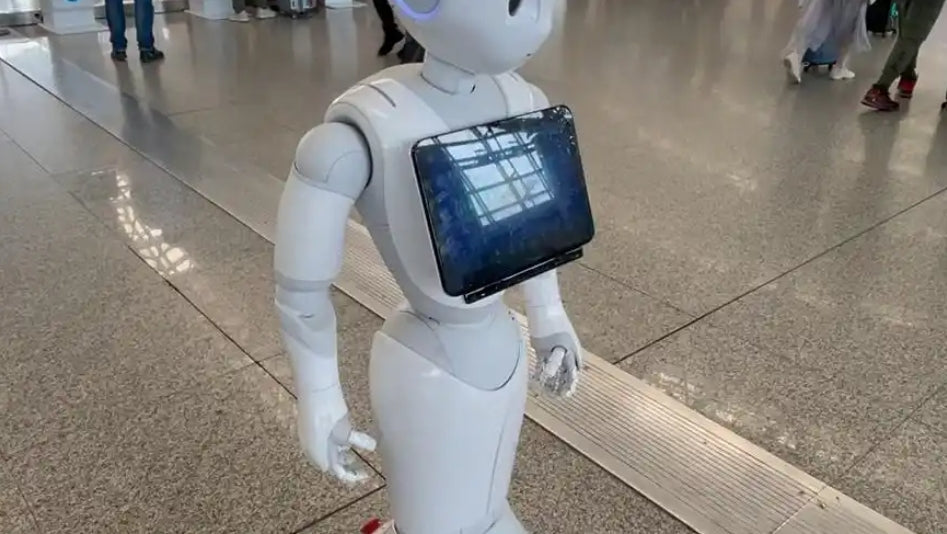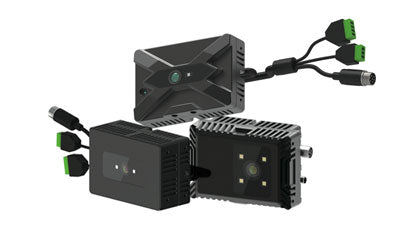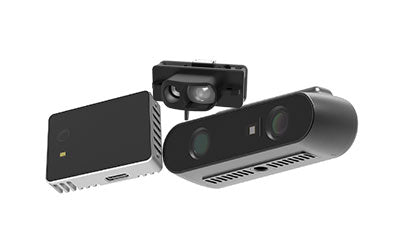Application Scenarios of TOF Cameras in Robot Navigation

With the rapid advancement of intelligent technologies, robots are increasingly being applied across various industries. Navigation technology is the core of autonomous decision-making and task execution in robots, encompassing environmental perception, localization, obstacle avoidance, and path planning. To achieve accurate perception of surroundings, robots rely on high-precision sensors to obtain three-dimensional information. TOF (Time-of-Flight) cameras, known for their superior depth-sensing capabilities, have become a critical component of modern robot navigation systems. This article explores the application scenarios and advantages of TOF cameras in robot navigation, offering a comprehensive understanding of how this technology empowers intelligent mobility in robotics.
What is a TOF Camera?
A TOF camera is an imaging device that measures the distance between the camera and an object by calculating the time it takes for light to travel from the emitter to the target and back. Unlike traditional 2D image sensors, TOF cameras generate depth information for every pixel, creating highly accurate 3D images. These cameras can perform wide-range depth measurements in real time and are unaffected by lighting conditions, making them ideal for real-time navigation in dynamic environments.
Core Functions of TOF Cameras in Robot Navigation
The primary function of TOF cameras in robot navigation systems is to capture high-precision 3D spatial depth information in real time, enabling robots to perceive the 'three-dimensional world.' By leveraging the flight time of light, robots not only 'see' objects but also determine their exact spatial positions and shapes. This capability supports autonomous navigation, path planning, and dynamic obstacle avoidance. The core applications can be categorized as follows:
1. Obstacle Detection and Avoidance
TOF cameras use active infrared projection to capture real-time depth images of the environment, accurately identifying the location, size, and shape of obstacles. Even in poorly lit conditions—such as nighttime or dim indoor settings—TOF cameras deliver stable data output, significantly enhancing operational safety and reliability.
Compared to traditional ultrasonic sensors or visual systems, TOF technology offers millisecond-level response time and centimeter-level depth accuracy, which is especially advantageous in dynamic environments. Examples include:
-
Household cleaning robots detecting pets, furniture legs, or thresholds;
-
Indoor delivery robots identifying and avoiding pedestrians;
-
Industrial AGVs recognizing moving obstacles and dynamically adjusting paths.
2. Path Planning and Navigation
Depth data is fundamental for map building and path decision-making. TOF cameras help robots construct point cloud models or 3D grid maps using high-resolution depth maps. Combined with SLAM (Simultaneous Localization and Mapping), robots can build real-time maps while moving, greatly improving the responsiveness and accuracy of navigation.
Key advantages include:
-
Enhanced navigation in narrow spaces: TOF cameras precisely measure distances between walls, furniture, or equipment, enabling smooth passage through tight areas;
-
High-density path optimization: 3D data offers more comprehensive navigation information than 2D images, allowing for safer, more efficient route planning;
-
Real-time path adjustments: When new obstacles appear or paths are blocked, TOF data allows robots to quickly rebuild maps and reroute.
3. Localization and Multi-Robot Coordination
In multi-robot systems or large-scale automated environments, robots must not only know their own location but also track and coordinate with other units. TOF cameras provide accurate spatial information to support:
-
Self-localization: Combined with landmark recognition, TOF depth data enables centimeter-level positioning even in GPS-denied indoor environments;
-
Relative positioning: Robots can judge distance and direction between each other, avoiding collisions and maintaining formations;
-
Task synchronization: In warehousing, multiple robots can share TOF-based spatial data to coordinate entry/exit, jointly transport goods, or execute tasks collaboratively.
Additionally, TOF cameras support precision manipulation. For instance, robotic arms can detect object pose using TOF data, enabling accurate grasping and placement, enhancing adaptability in industrial environments.
Application Scenarios of TOF Cameras in Robot Navigation
1. Autonomous Mobile Robots (AMRs)
TOF cameras play a vital role in autonomous mobile robots, especially in urban and outdoor environments. These robots must detect and avoid dynamic obstacles in real time. TOF cameras provide accurate depth data to help AMRs recognize road obstacles, pedestrians, and other vehicles. Compared to LiDAR, TOF cameras are more cost-effective and capable of delivering real-time depth sensing, making them an ideal sensor for mobile autonomy.
2. Service Robots
Service robots are widely used in hotels, homes, hospitals, and shopping malls. Their core functionalities—autonomous navigation, interactive services, and environmental adaptation—heavily rely on accurate environmental sensing. TOF cameras enable the following advantages:
High-Precision Obstacle Avoidance
TOF cameras accurately detect a wide range of obstacles, including transparent glass, low furniture, and small objects. Whether it’s cables, toys, or pets at home, or luggage and trolleys in hotel corridors, the robot can perceive and safely maneuver around them.
Refined Path Navigation and Dynamic Adjustments
In dynamic environments like busy malls or hospitals, TOF cameras continuously update depth maps to help robots reroute in real time. For example:
-
Delivery robots autonomously ride elevators and complete cross-floor deliveries;
-
Hospital guide robots adapt to pedestrian flow and guide patients efficiently.
Environmental Modeling and Adaptive Learning
Robots can learn commonly used paths and recognize frequently visited areas. For instance, a cleaning robot can optimize its cleaning sequence by learning furniture layouts and focus on often-missed spots using TOF data.
Enhanced Interaction Experience
TOF cameras enable natural user interaction. In smart reception or guide scenarios, the robot can detect whether a user is approaching or turning away, adjusting voice prompts or movements accordingly. They also support gesture recognition and contactless triggering, improving user experience.
3. Cleaning Robots
Cleaning robots, particularly robotic vacuum cleaners, rely on TOF cameras for smart navigation. TOF data allows them to map room layouts, plan efficient cleaning routes, and avoid obstacles such as furniture or walls. These robots also perform well in low-light conditions, ensuring night-time cleaning remains accurate and effective.
4. Drones
Drones use TOF cameras for obstacle avoidance and precise indoor positioning. In complex or indoor environments, TOF cameras provide real-time depth data for the drone to identify surrounding objects and avoid collisions. Their effectiveness in low-light conditions makes them suitable for a wide range of aerial applications.
Advantages of TOF Cameras in Robot Navigation
TOF cameras offer numerous benefits in robot navigation, especially in terms of environmental perception:
1. High Precision and Real-Time Performance
TOF cameras deliver millimeter-level depth accuracy and high-speed data output, making them ideal for responsive obstacle avoidance and path planning, even in fast-moving scenarios.
2. Unaffected by Lighting Conditions
Since TOF cameras use active infrared projection, they work reliably in both dark and overly bright environments, ensuring consistent performance indoors and outdoors.
3. Compact and Low Power Consumption
TOF cameras are small and energy-efficient, suitable for integration into compact or portable robots. Their low power usage supports long operating times, especially for autonomous or standby tasks.
4. Efficient 3D Mapping and Navigation
TOF cameras rapidly generate 3D environmental models, enabling accurate and autonomous path planning. With this data, robots can safely navigate complex spaces and dynamically respond to changes in real time.
Conclusion
As a cutting-edge depth-sensing technology, TOF cameras are rapidly becoming essential components in robot navigation systems. Their high accuracy, real-time performance, and adaptability to lighting conditions make them ideal for various navigation, positioning, and obstacle avoidance tasks. As TOF technology continues to evolve and become more affordable, it will play an increasingly important role in advancing intelligent robotics across industries.
Synexens 3D Of RGBD ToF Depth Sensor_CS30
Our professional technical team specializing in 3D camera ranging is ready to assist you at any time. Whether you encounter any issues with your TOF camera after purchase or need clarification on TOF technology, feel free to contact us anytime. We are committed to providing high-quality technical after-sales service and user experience, ensuring your peace of mind in both shopping and using our products.





